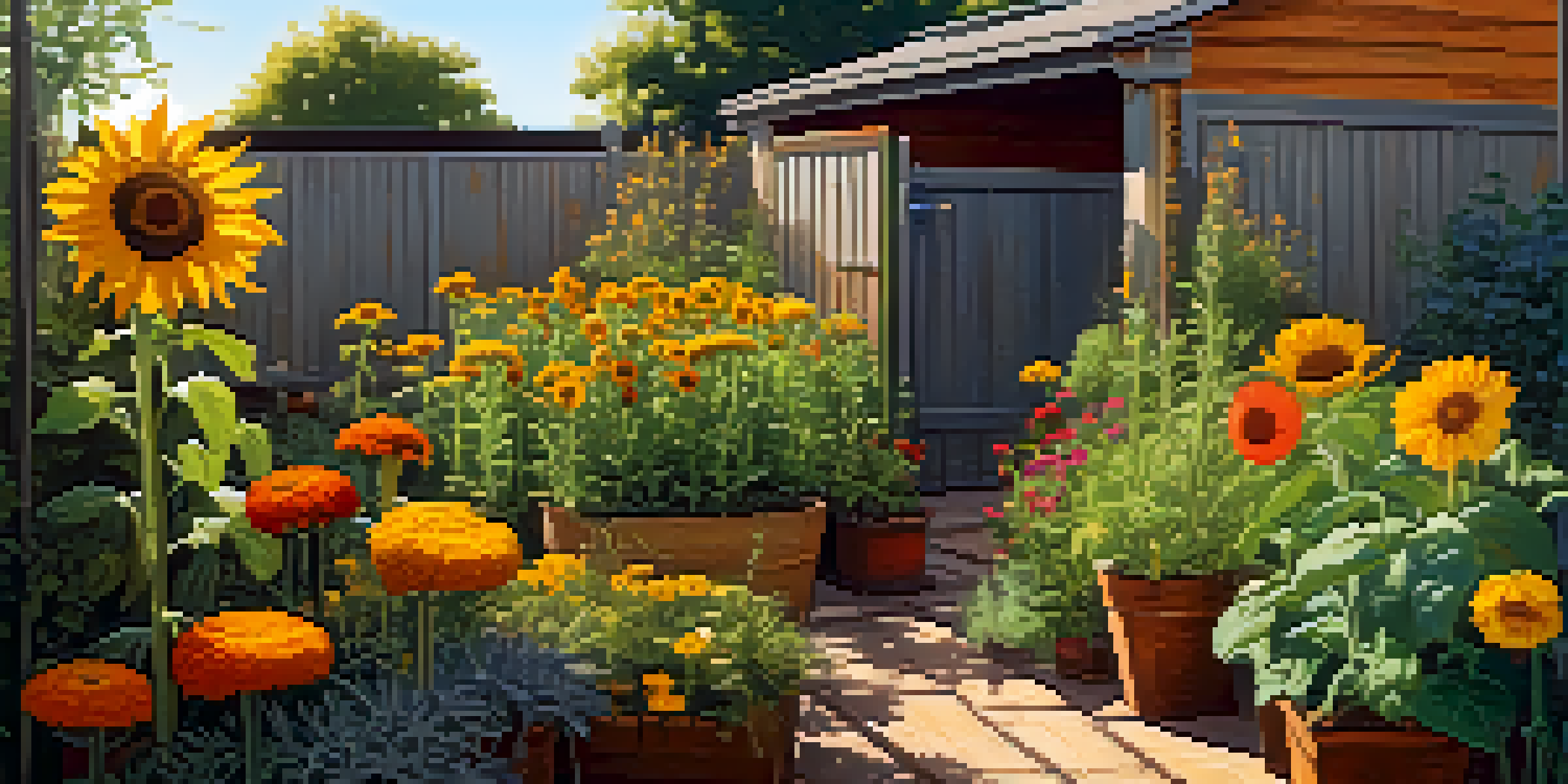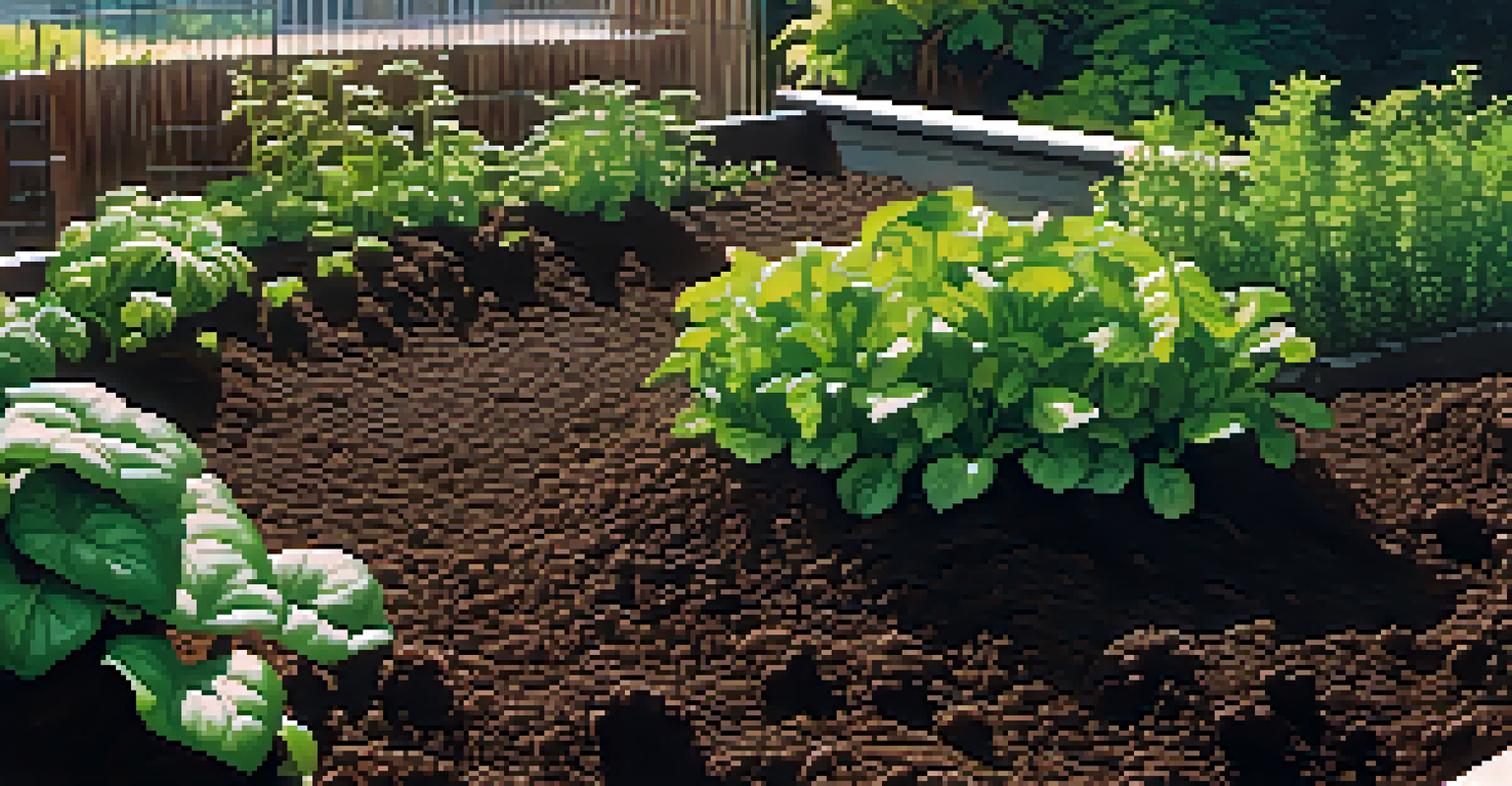Permaculture Principles for Sustainable Urban Gardening

Understanding Permaculture: A Holistic Approach to Gardening
Permaculture is more than just gardening; it's a philosophy that promotes sustainable living. By mimicking natural ecosystems, we can create gardens that thrive in harmony with the environment. This approach emphasizes working with nature rather than against it, making it particularly beneficial for urban settings where space is limited.
The greatest threat to our planet is the belief that someone else will save it.
In urban gardening, applying permaculture principles helps maximize productivity while minimizing waste. You can create beautiful, functional spaces that not only produce food but also enrich the community. Think of permaculture as a way of designing your garden to be self-sustaining, just like nature does.
To truly embrace permaculture, it's essential to understand its core principles. These guiding concepts will help you design a garden that is resilient, productive, and environmentally friendly. Let's dive into the specific principles that can transform your urban gardening experience.
Observation: The Key to Understanding Your Environment
Before planting anything, take some time to observe your space. Understanding factors like sunlight, wind patterns, and soil quality is crucial for successful gardening. By spending a few days or weeks simply watching your garden area, you can gain insights that will inform your planting choices.

For instance, if you notice certain areas receive more sunlight, those spots are perfect for sun-loving plants. Conversely, shaded areas might be best suited for leafy greens or herbs. Observation allows you to tailor your garden to the specific conditions of your urban environment, making it more productive.
Embrace Permaculture Principles
Applying permaculture principles can transform urban gardening into a sustainable and productive endeavor.
Remember, observation is an ongoing process. As your garden grows, continue to pay attention to changes in your environment and adapt your practices accordingly. This adaptability is a cornerstone of permaculture and will help ensure your garden's long-term success.
Designing for Diversity: The Power of Companion Planting
Diversity is a fundamental principle of permaculture, and companion planting is a practical way to implement it in your garden. By growing different plants together, you can create a balanced ecosystem that supports healthy growth. For example, planting marigolds alongside vegetables can deter pests naturally.
To forget how to dig the earth and to tend the soil is to forget ourselves.
In an urban garden, where space is often limited, interplanting can maximize your yield. Combining tall plants with shorter ones or mixing perennials with annuals can lead to a thriving garden that offers a variety of harvests. This diversity not only boosts productivity but also enhances soil health.
Creating a diverse garden encourages beneficial insects and microorganisms, which contribute to a sustainable ecosystem. By embracing companion planting, you can cultivate a flourishing urban garden that mirrors the complexity of nature.
Soil Health: The Foundation of a Successful Garden
Healthy soil is the backbone of any successful garden, especially in urban areas where the soil may be compromised. Focusing on building and maintaining soil health will lead to more productive plants and a thriving ecosystem. Techniques like composting and mulching can significantly enrich your soil.
Composting kitchen scraps and yard waste creates nutrient-rich organic matter that feeds your plants. In urban gardening, where access to quality soil may be limited, composting is a sustainable way to improve soil health and reduce waste. Plus, it’s a great way to engage with your local community.
Soil Health is Essential
Focusing on soil health through practices like composting and mulching is crucial for a thriving urban garden.
Mulching not only helps retain moisture but also suppresses weeds and regulates soil temperature. By prioritizing soil health, you're setting up your urban garden for long-term success, creating a sustainable environment for both plants and wildlife.
Water Management: Efficient Use of Resources
Water is a precious resource, particularly in urban gardening. Implementing efficient water management practices is essential for sustainability. Techniques like rainwater harvesting and drip irrigation can help you conserve water while ensuring your plants receive the moisture they need.
Collecting rainwater from roofs and directing it to storage barrels is an excellent way to utilize natural resources. This not only reduces your reliance on municipal water supplies but also makes your gardening practices more sustainable. Think of it as a way to work with nature, rather than against it.
Additionally, using mulch can help retain water in the soil, reducing the frequency of watering. By focusing on efficient water management, you can create a resilient urban garden that conserves resources and thrives in any weather conditions.
Creating Zones: Efficient Garden Design for Urban Spaces
Permaculture promotes the idea of creating zones based on the frequency of use and the specific needs of your plants. In an urban setting, this means designing your garden layout to optimize space and ensure easy access to different plants. By organizing your garden into zones, you can enhance productivity and make maintenance more manageable.
For instance, placing frequently harvested herbs near your kitchen can save time and effort. Similarly, grouping plants with similar water and sunlight needs together can simplify your gardening tasks. This thoughtful organization leads to a more efficient, enjoyable gardening experience.
Community Engagement Matters
Building connections through community gardening fosters collaboration and enhances sustainability.
Think of your garden as a mini-ecosystem where everything has its place. By establishing zones, you create a well-structured environment that maximizes space and resources, making your urban gardening efforts more sustainable.
Community Engagement: Building Connections Through Gardening
Urban gardening isn't just about growing food; it's also about building community connections. Engaging with your neighbors and sharing gardening experiences can foster a sense of belonging and collaboration. Community gardens are a perfect example of how gardening can bring people together.
By involving others in your gardening journey, you can share resources, knowledge, and even harvests. Think of organizing workshops to teach others about permaculture principles or hosting seed swaps to promote biodiversity. These interactions enrich not only your garden but also your community.

Creating a sense of community around gardening can lead to more sustainable practices and a shared commitment to environmental stewardship. Embrace the spirit of collaboration, and watch how your urban garden flourishes both physically and socially.
Continuous Learning: Adapting and Evolving Your Garden
In permaculture, the journey of gardening is one of continuous learning. As you experiment with different plants and techniques, you'll discover what works best in your specific environment. This willingness to adapt and evolve your gardening practices is key to long-term sustainability.
Keep track of your successes and failures, and don't hesitate to make changes based on your observations. For instance, if a certain plant isn’t thriving, consider trying another variety that may better suit your conditions. This hands-on approach encourages resilience in your garden.
Additionally, connect with local gardening groups or online communities to share experiences and gain new insights. By fostering a mindset of continuous learning, you can create an urban garden that not only survives but thrives amidst the challenges of city living.